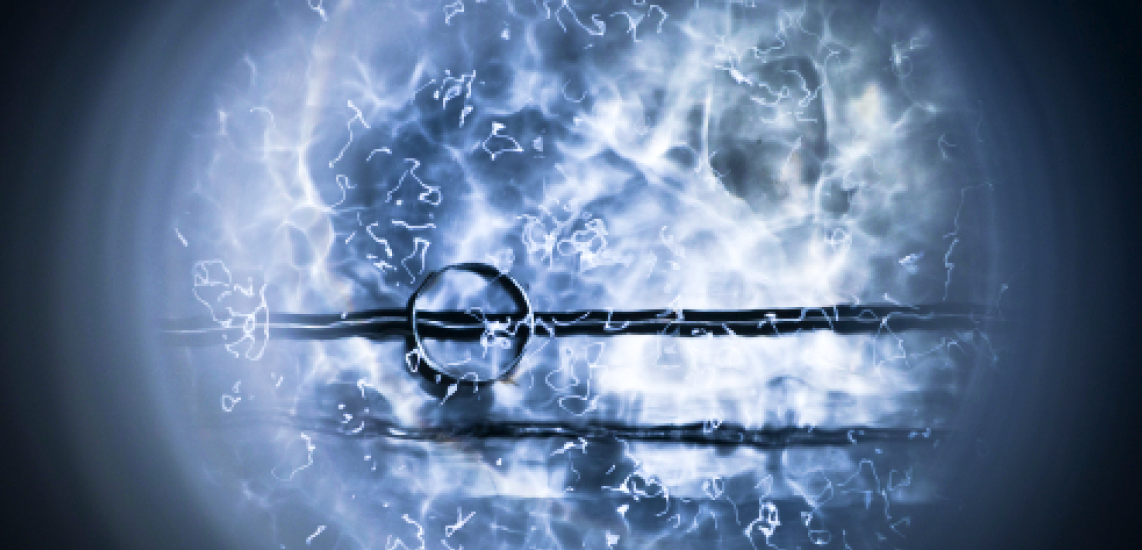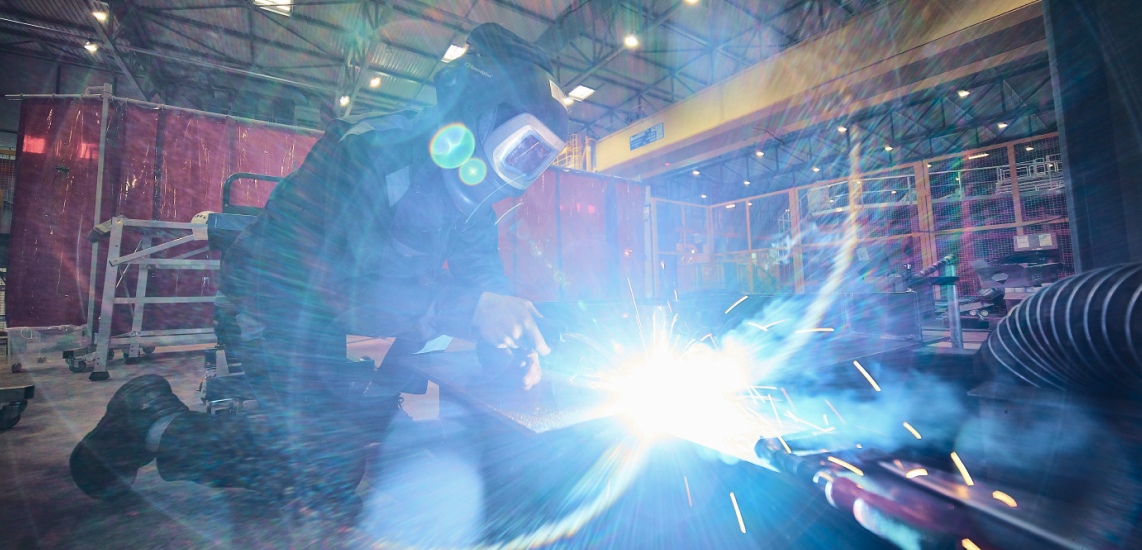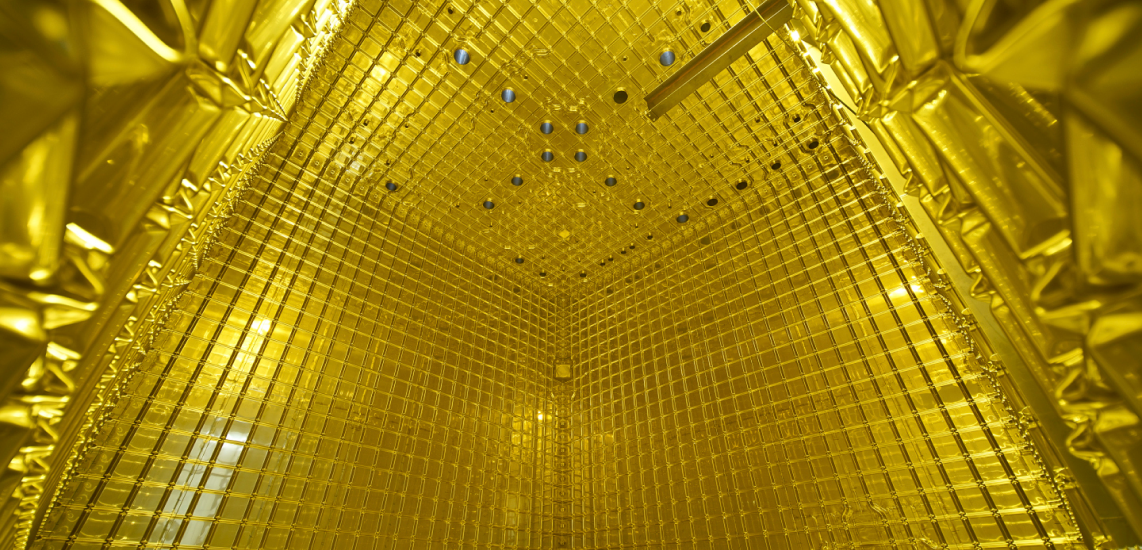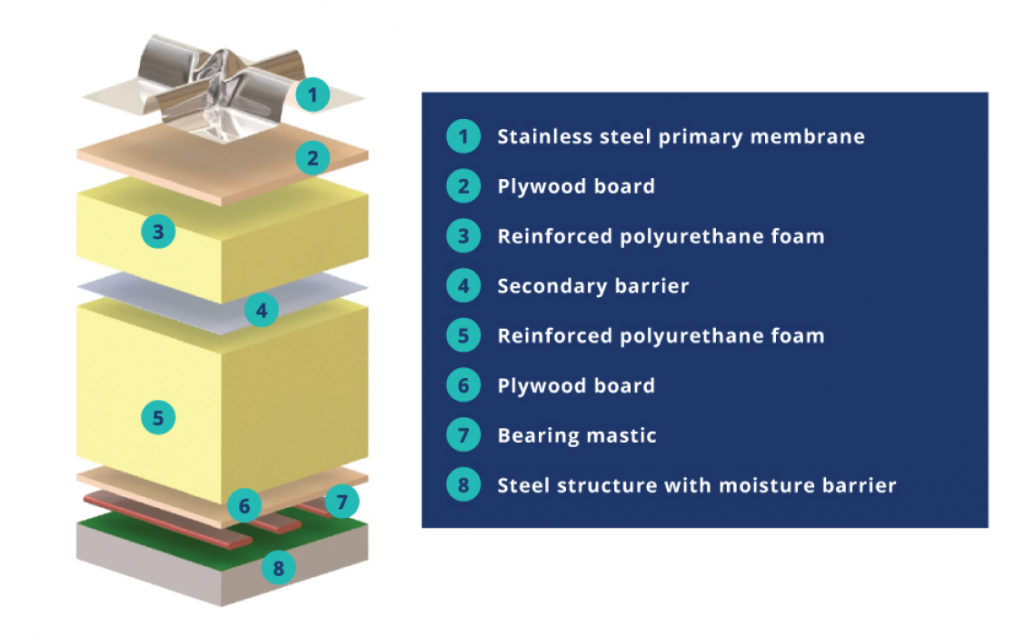
DUNE’s detectors will use vast quantities of argon, a transparent substance that must be kept at minus 184 degrees Celsius (minus 300 degrees Fahrenheit) to stay liquid. In fact, the DUNE far detector is expected to be the largest cryogenic instrument ever placed deep underground.
Massive tanks a mile underground
The LBNF project will assemble the cryostats deep underground in huge caverns a mile below the surface. Construction personnel will weld together components that are small enough to fit through the long Ross Shaft at Sanford Lab.

The DUNE far detector will comprise four cryostats — large containers that act like a thermos to keep the liquid argon ice cold. Each cryostat will house one of the four DUNE far detector modules.

Walls that keep the argon cool
The free-standing cryostats feature a dual-membrane system similar to the one used by liquefied natural gas transport ships. A corrugated stainless-steel liner sits inside an insulating layer, sandwiched between aluminum sheets. Multiple layers keep the liquid argon cold and supply the strength to keep it contained and right where it should be — interacting with neutrinos.

The cryogenics system includes the pipes, pumps, filters and other equipment needed to chill, circulate and purify the liquid argon. The system will also circulate cold liquid nitrogen — the cryogen used for refrigeration.
The DUNE detector components will be assembled inside the empty cryostats. The cryogenics system will then purge each container of air, fill it with liquid nitrogen, reliquefy any gas that boils off and cycle the argon through a purifying system over the experiment’s lifetime – at least 10 years.
Another part of the cryogenics is the system for transporting argon underground to fill the detectors. During the initial filling period, LBNF plans for about five 18-ton deliveries by truck per day at the far detector. There, the argon will be piped underground as gas and recondensed to a liquid. Scientists will use this tremendous amount of liquid argon to capture incredible particle tracks that will reveal neutrinos’ secrets and help us better understand our universe.
